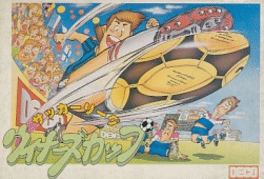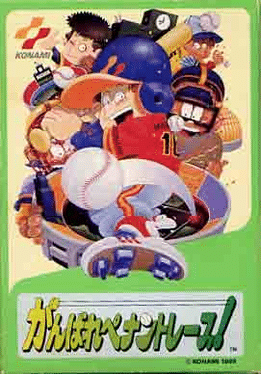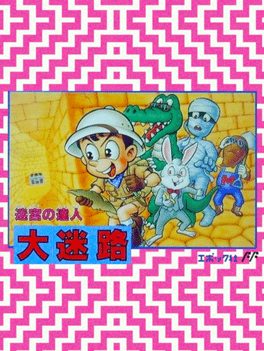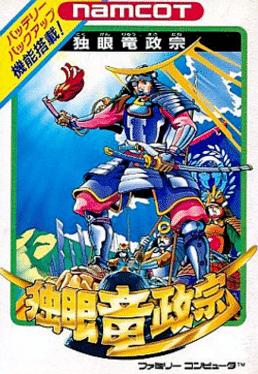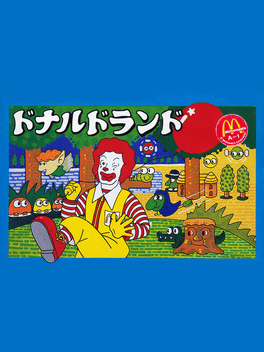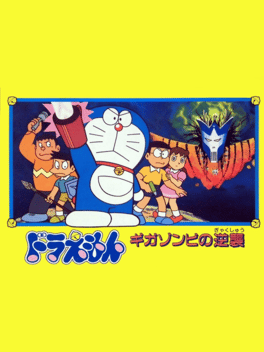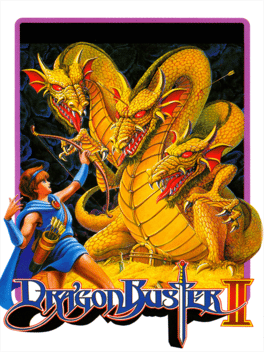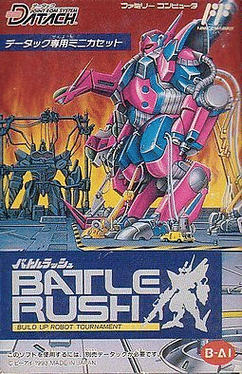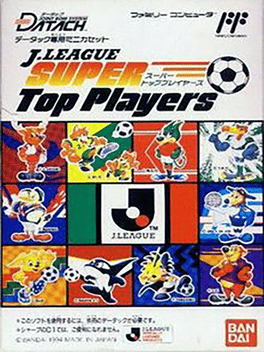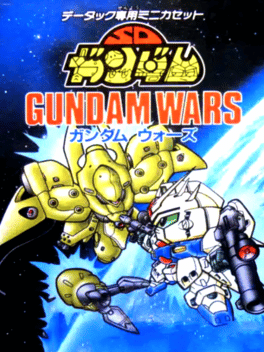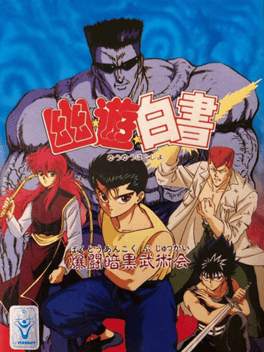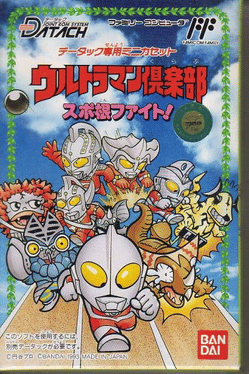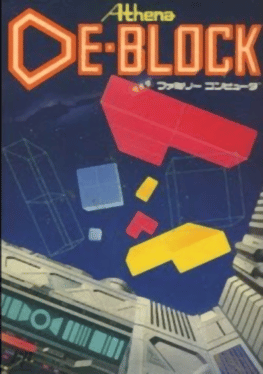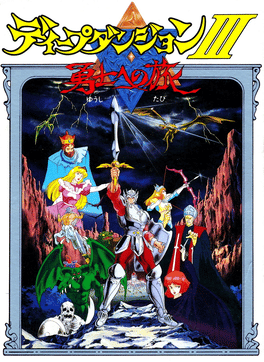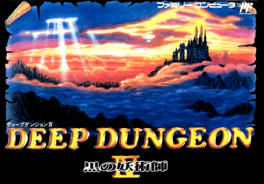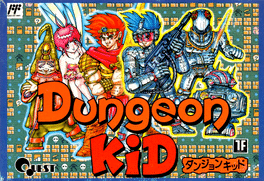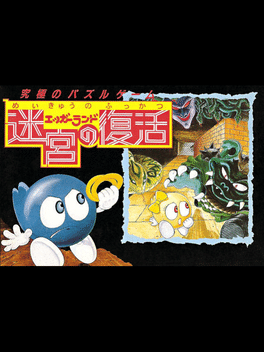Most Popular Family Computer Games - Page 40
-
Soccer League: Winner's Cup
1988
Soccer League - Winner's Cup is a soccer game developed by SAS Sakata for the Famicom, and published by Data East in 1988. During game play, field scrolls horizontally across the screen. Players select one of eight international teams and attempt to win the World Cup. The teams that the player can select include: Japan, Germany, Brazil, France, South Korea, England, Argentina, and the USA. Players may choose to play solo against the computer, or compete head to head with another player. Although the game was never released outside of Japan, most of the options are written in English. -
Ganbare Pennant Race!
1989
The ultimate showdown in baseball! Take to the field and batter up, and direct your team to Pennant glory. This is Konami's greatest sports event! Become the worlds greatest! -
Dai Meiro: Meikyuu no Tatsujin
1990
Dai Meiro: Meikyu no Tatsujin is a grid-based dungeon crawler developed and published by Epoch. Unlike most dungeon crawlers Dai Meiro does not contain any enemies and is focused primarily on exploration. The game was released in Japan in 1990. -
Daiku no Gen-san 2: Akage no Dan no Gyakushuu
1993
Daiku no Gen-San 2: Akage no Dan no Gyakushuu is an Action game, developed by Micronics and published by Irem, which was released in Japan in 1993. -
Dokuganryu Masamune
1988
Dokuganryu Masamune
1988
Dokuganryu Masamune (独眼竜政宗?) is a historical simulation game developed and produced by Namco for the Famicom in 1988. It is the third such game to appear on the Famicom inside of a month, including Koei's Nobunaga's Ambition and HOT-B's Takeda Shingen. This game is based on the life of Date Masamune, who held power in Japan during the early Edo period. An outstanding tactician, he was made all the more iconinc for his missing eye, and Date was often called dokuganryu (独眼竜? one-eyed dragon). In the game, you play as the warring overlord, and your aim is the unification of 11 regions under one rule. While comparable to other historical simulations released around the same time, this game is a little simpler and features immediate battle scenes, a hexagonal map, and includes mini-games such as a gold mine search and horseback archery. The game keeps a light, almost humorous tone, providing updates in the game via the Namcot newspaper, which shows changes in conversation tone and the emotions of your o -
Donald Land
1988
Donald Land
1988
When the Gumon Family takes over McDonaldland and captures Ronald's friends including Grimace, Birdie, the Fry Guys, and others, it's up to the jolly clown himself to put an end to their vile machinations and eat hamburgers across numerous locales leading up to the final castle headquarters of the Gumon Family. -
Doraemon: Giga Zombie no Gyakushuu
1990
The second video game outing for the popular Japanese children's character is a Final Fantasy style role-playing game. The player takes the role of Doraemon the robot cat and leads him on an adventure through time to stop the evil Giga Zombie. -
Double Moon Densetsu
1992
Double Moon Densetsu
1992
Double Moon Densetsu is a 1992 role-playing video game for the Family Computer published by Masaya. It is based on an earlier play-by-mail RPG also titled Double Moon Densetsu, serialized in Marukatsu Famicom and eventually Marukatsu Super Famicom; in addition to this computer game, there was also a tabletop RPG system produced based on the work. A deity named Fatima created a world with two different continents; that divided the world of sorcery from the world of swordsmanship. An evil demon plans to destroy this world by bringing forth a dark dragon from a demonic dimension. -
Dragon Buster II: Yami no Fuuin
1989
Centuries ago, Dragons and Demons roamed the country and brought terror into the lives of all people. However, a local legend states that the Sword of Thruth can restore peace to the land. It turns out that the almighty weapon is kept by the most ferocious dragon who ever lived but this doesn't stop the young Carl from willing to take on the challenge. He is small but the best archer the land has ever seen! -
Battle Rush: Build Up Robot Tournament
1993
The player has to build his own combat robot to use in a fighting tournament. These robots are built in factories that assign the robot a name in addition to installing its head, body, shoulder, and feet. The player has a pre-game lobby to get ready for the robot combat action. All matches have rounds of 60 seconds (unlike the 99-second round of most modern fighting video games). Both robots have a separate gauge for energy and damage. Standard punches and kicks can be thrown in addition to special moves (which look like ammunition). -
J.League Super Top Players
1994
The game itself is interesting, with ten teams to choose from, and multiple game modes including an actual tournament or penalty kick practicing. For the PK Battle modes, each player must select a different team. He must then scan a player card (not a team card), and then that player will have a chance to kick a penalty kick (if it is his turn). For all other modes, the player must scan a team card and that will be the team that he will play as for the game(s). The main mode of play is the J.LEAGUE mode, of course. It is set up in a season/tournament setting, with 18 games per team. There are ten teams total in this version of J.League, and they are randomly sorted to play against a different team each day. The games are split into two periods with three minutes (3:00) apiece. Prior to starting a game, the player can choose the formation of his eleven active players, from one of three layouts that he can see on the small screen (4-4-2, 4-3-3, or 3-5-2). -
SD Gundam: Gundam Wars
1993
SD Gundam: Gundam Wars is a Role-Playing game, developed by TOSE and published by Bandai, which was released in Japan in 1993. -
YuYu Hakusho: Bakutou Ankoku Bujutsu Kai
1993
YuYu Hakusho: Bakutou Ankoku Bujutsu Kai is an Action game, developed by TOSE and published by Bandai, which was released in Japan in 1993. -
Ultraman Club: Supokon Fight!
1993
Ultraman Club: Supokon Fight! is a Sports game, developed by TOSE and published by Bandai, which was released in Japan in 1993. -
De-Block
1991
-
Deep Dungeon III: Yuushi he no Tabi
1988
Deep Dungeon III: Yūshi he no Tabi is the third installment in the Deep Dungeon series and the first to be released on the Famicom. This is the first Deep Dungeon title to offer the player a world to explore spanning multiple dungeons and multiple towns. It also allows the player to create their own party with up to three companions in addition to the hero character, with a choice of ranger, magician or priest for each character. Though the player can dismiss a character once the game has started, they will only be able to replace that character if they meet another pre-created playable character in one of the dungeons. However, the game will still end as soon as the protagonist "swordsman" character is defeated. This game retains the player-adjustable level-up stats from the first game, as well as the feature that removes randomized encounters if the player is at a significantly higher experience level than needed for their current location. One exclusive and rather annoying feature of this game engine is that so -
Deep Dungeon IV: Kuro no Youjutsushi
1990
Deep Dungeon IV: Kuro no Youjutsushi is the fourth and final installment in the Deep Dungeon series. Unfortunately this game has removed the custom character feature of the previous game. Through the game, the player will meet up to two additional playable characters with predetermined class. This game also reverts to the standard practice or randomizing characters' stat growth when gaining an experience level. New to this engine is that the player can eventually learn to summon two monsters to function as a temporary additional party member for a single battle. It also removed the feature that stops random battles when the player is significantly more powerful than the enemies. This isn't as bad as it seems as the maps in this game are also much smaller (whereas the previous games used multi-floor dungeons up to 32x32 tiles, the dungeons in this game are either single floor, or multiple floors that can fit within a single 32x32 map) In this game, the player can accept "requests" from the non-player characters. Th -
Dragon Scroll: Yomigaerishi Maryuu
1988
Dragon Scroll: Yomigaerishi Maryuu is an adventure game developed by Konami in 1987 for the Famicom. It is often compared to The Legend of Zelda in terms of game play, but it is considerably more difficult due to the lack of clues or information on how to proceed. The game is non-linear, and you must explore different territories in search of the eight stolen magical artifacts that maintain a sleep spell over a large and dangerous dragon. Enemies roam the overworld and dungeons, and must be defeated in order to earn experience points. Experience points are used to increase the player's level, which makes him stronger and gives him access to stronger weapons and magic. Most useful items are well hidden and, even when obtained, are difficult to determine their appropriate use. The game features a password system which allows you to continue play where you left off. -
Dungeon Kid
1990
Dungeon Kid
1990
Dungeon Kid is a Role-Playing game, developed by Pixel and published by Quest, which was released in Japan in 1990. -
Eggerland: Meikyuu no Fukkatsu
1988
Eggerland: Meikyuu no Fukkatsu is a puzzle video game developed by HAL Laboratory for the Family Computer. It was released in 1988 in Japan as the fourth game in the Eggerland series following Eggerland Mystery, and is the third in the series not counting the port of Eggerland 2 made for the Famicom Disk System. The game contains roughly 162 stages (or maps), which are arranged on an 8-by-16 grid (with some stages hidden).
